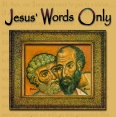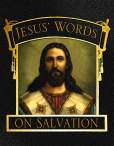In Frederick Webb Hodge, Handbook of American Indians north of Mexico (1911) at 775, we read: "Antonio de Montezinos, a Marano (secret Jew), while journeying in South America, claimed that he met savages whofollowed Jewish practices. This story he repeated in Holland, in 1644, to Manaaseh ben Israel, who printed it in his work, Hope of Israel."
Mallery claimed that despite these similarities, it is not true that American Indians believed in a single supreme being prior to contact with missionaries.[6] Despite this, as Hodge mentions: "Certain identities and resemblances in customs, ideas, institutions, etc., of the American Indians and the ancient Jews are pointed out by Mallery in his Israelite and Indian: A Parallel in Planes of Culture (Proc. A. A. A.S., xxxvm, 287-331,1889), though the address contains many misconceptions."[7] Mallery's words were:
" After careful examination, with the assistance of explorers and linguists, I reassert my statement that no tribe or body of Indians before missionary influence entertained any formulated or distinct belief in a single overruling 'Great Spirit,' or any being that corresponded to the Christian conception of God. But I freely admit, with even greater emphasis, that an astounding number of customs of the North American Indians are the same as those recorded of the ancient Israelites."[8]
Study Notes by Doug
Also the article "Los Lunas Decalogue" Wikipedia describes a stone found in New Mexico that has a serious potential to be a copy of the Decalogue written between 500 and 2000 years ago. Unfortunately, there is controversy about whether it is a fake. Interestingly, one scholar dismisses its relevancy because there is no sign of Hebrew-peoples encampents anywhere nearby. But if Indian culture resonates with Hebrew-Bible practices, then perhaps that scholar would acknowledge there is a greater possibility of its genuiness.
The first recorded mention of the stone is in 1933, when the late professor Frank Hibben (1910-2002), an archaeologist from theUniversity of New Mexico, saw it.[4] According to a 1996 interview, Hibben was "convinced the inscription is ancient and thus authentic. He report[ed] that he first saw the text in 1933. At the time it was covered with lichen and patination and was hardly visible. He was taken to the site by a guide who had seen it as a boy, back in the 1880s."[5] However, Hibben's testimony is tainted by charges that in at least two separate incidents, he fabricated some or all of his archaeological data to support his pre-Clovis migration theory.[6][7][8]
The reported 1880s date of discovery is important to those who believe that the stone is pre-Columbian. However, the Paleo-Hebrew script, which is closely related to the Phoenician script, was well known by at least 1870, thus not precluding the possibility of a modern hoax.[9]
Because of the stone's weight of over 80 tons, it was never moved to a museum or laboratory for study and safekeeping. Many visitors have cleaned the stone inscriptions over the years, likely destroying any possibility for scientific analysis of the inscriptions' patina. Nevertheless, comparing it to a modern inscription nearby, geologist George E. Morehouse, a colleague of Barry Fell, estimated that the inscription could be between 500 and 2000 years old and explaining its freshness and lack of patina as being due to frequent scrubbing to make it more visible.[10]
References
- http://books.google.
com/books?id=UJJ6AAA AMAAJ&dq=indians%20m issionary%20followed %20jewish%20customs& pg=PA193#v=onepage&q =&f=false - http://books.google.
com/books?id=EpV1AAA AMAAJ&dq=Mallery%20i n%20his%20Israelite% 20and%20Indian%3A%20 A%20Parallel%20in%20 Planes%20of%20Cultur e&lr=&pg=PA19#v=onep age&q=&f=false - http://books.google.
com/books?id=EpV1AAA AMAAJ&dq=Mallery%20i n%20his%20Israelite% 20and%20Indian%3A%20 A%20Parallel%20in%20 Planes%20of%20Cultur e&lr=&pg=PA23#v=onep age&q=&f=false - http://books.google.
com/books?id=EpV1AAA AMAAJ&dq=Mallery%20i n%20his%20Israelite% 20and%20Indian%3A%20 A%20Parallel%20in%20 Planes%20of%20Cultur e&lr=&pg=PA25#v=onep age&q=&f=false - http://books.google.
com/books?id=EpV1AAA AMAAJ&dq=Mallery%20i n%20his%20Israelite% 20and%20Indian%3A%20 A%20Parallel%20in%20 Planes%20of%20Cultur e&lr=&pg=PA26#v=onep age&q=&f=false - http://books.google.
com/books?id=I4FOAAA AMAAJ&dq=Mallery%20i n%20his%20Israelite% 20and%20Indian%3A%20 A%20Parallel%20in%20 Planes%20of%20Cultur e&lr=&pg=PA88#v=onep age&q=Mallery%20in%2 0his%20Israelite%20a nd%20Indian:%20A%20P arallel%20in%20Plane s%20of%20Culture&f=f alse - http://books.google.
com/books?id=ze4YAAA AYAAJ&dq=indians%20m issionary%20followed %20jewish%20customs& pg=PA775#v=onepage&q =indians%20missionar y%20followed%20jewis h%20customs&f=false - http://books.google.
com/books?id=I4FOAAA AMAAJ&dq=Mallery%20i n%20his%20Israelite% 20and%20Indian%3A%20 A%20Parallel%20in%20 Planes%20of%20Cultur e&lr=&pg=PA88#v=onep age&q=Mallery%20in%2 0his%20Israelite%20a nd%20Indian:%20A%20P arallel%20in%20Plane s%20of%20Culture&f=f alse - http://books.google.
com/books?id=EpV1AAA AMAAJ&dq=Mallery%20i n%20his%20Israelite% 20and%20Indian%3A%20 A%20Parallel%20in%20 Planes%20of%20Cultur e&lr=&pg=PA19#v=onep age&q=&f=false




